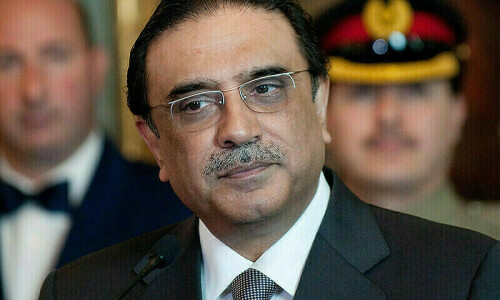In a historic first, a Pakistani satellite will orbit the moon as part of China’s Chang’e-6 lunar mission, which was launched from Hainan, China, on Friday.
The mission, which aims to explore the moon’s “dark side”, will employ lunar research payloads from multiple countries, including Pakistan’s iCube Qamar satellite.
The Institute of Space Technology (IST) on Tuesday said Pakistan’s “historic” lunar module iCube-Q, which was designed by IST in collaboration with China’s Shanghai University (SJTU) and Pakistan’s national space agency Suparco, will be aboard Chang’e-6.
The mission, dubbed Chang’e, is named after the mythical Chinese moon goddess.
Chang’e-6 aims to collect around two kilogrammes of lunar samples from the far side of the Moon and bring them back to Earth for analysis. Chinese state news agency Xinhua hailed it as “the first endeavour of its kind in the history of human lunar exploration”.
“Chang’e-6 will collect samples from the far side of the Moon for the first time,” Ge Ping, vice director of China’s Lunar Exploration and Space Engineering Centre, told journalists.
China will send a robotic spacecraft in the coming days on a round trip to the moon’s far side in the first of three technically demanding missions that will pave the way for an inaugural Chinese crewed landing and a base on the lunar south pole.
The probe is set to land in the immense South Pole-Aitken Basin, one of the largest known impact craters in the solar system. Once there, it will scoop up lunar soil and rocks, and carry out other experiments in the landing zone.
With no direct line of sight with the Earth, Chang’e-6 must rely on a recently deployed relay satellite orbiting the moon during its 53-day mission, including a never-before-attempted ascent from the moon’s “hidden” side on its return journey home.
On Chang’e-6, China is carrying payloads from France, Italy, Sweden and Pakistan, while Chang’e-7 will bear payloads from Russia, Switzerland and Thailand when it launches in 2026.
Nasa is banned by US law from any collaboration, direct or indirect, with China.
Under the separate Nasa-led Artemis programme, US astronauts will land near the south pole in 2026 — the first humans on the moon since 1972.
iCube Qamar
The iCube-Q orbiter carries two optical cameras to image the lunar surface. The module is a cube satellite or CubeSat — miniature satellites typically characterised by their small size and standardised cubic design.
Due to their compact size and relatively low cost compared to traditional satellites, CubeSats offered opportunities for universities, research institutions and commercial entities to participate in space missions and gather valuable data for scientific advancement and innovation.
Beijing’s “space dream”
Plans for China’s “space dream” have been put into overdrive under President Xi Jinping.
Beijing has invested heavily in its space programme over the last decade, targeting a string of ambitious undertakings to close the gap with the two traditional space powers — the United States and Russia.
The country has notched several notable achievements, including building a space station called Tiangong, or “heavenly palace”, to which it sent a fresh crew of three astronauts last month.
Beijing has landed robotic rovers on Mars and the moon and made China the third country to independently put humans in orbit. China aims to send a crewed mission to the moon by 2030, with further plans to build a base on the lunar surface.
Reactions
President Asif Ali Zardari and Prime Minister Shehbaz Sharif congratulated the nation on the successful launch of Pakistan’s maiden lunar mission.
State-run broadcaster Radio Pakistan reported that the president congratulated the IST, Suparco and the China National Space Administration on the achievement.
He said the successful launch would be a “milestone” for Pakistan’s space programme. The president also commended the cooperation between Pakistan and China in aerospace.
PM Shehbaz hailed the iCube-Q satellite as “Pakistan’s first step in space” and said that Pakistani scientists and engineers were “proving their mettle … like the expertise they exhibited in the nuclear technology [programme]”.
The prime minister said that Pakistan and China’s friendship, which was “higher than Himalayas, deeper than ocean, and sweeter than honey” had now “crossed the frontiers of space”.
The premier watched the live launch of the mission.
The acceptance of Pakistan’s mission among eight countries was the recognition of the capabilities of the country’s scientists and experts, he added.
“This is a historic milestone in the technological development. By this achievement, Pakistan has entered a new era of exploring space for productive purposes,” the prime minister remarked.
PM Shehbaz said the achievement would help build Pakistan’s capacity in the satellite communications besides opening up new avenues for scientific research, economic development and national security.
“Our sons of soil have proved that they have the capability، passion and expertise to explore space. God willing, Pakistan will achieve excellence in the fields of space and economy too as it had done in the field of nuclear technology on May 28, 1998.”
By realising the dream of self-dependence in the communications infrastructure, Pakistan will “join the comity of nations playing a leading role in the sector”, he remarked.
Calling Pakistan’s development in science and technology, modern sciences and skill development the need of the hour, the prime minister reiterated the resolve to uplift the country’s youth in the said fields to ensure that the country achieved “excellence” in the field of inventions.
Deputy Prime Minister and Foreign Minister Ishaq Dar took to X to “congratulate the young Pakistani students and scientists on the launch” of the lunar mission.
“Today’s launch from Hainan … is a good example of countries and organisations coming together for space cooperation and shared benefits,” he added.















































